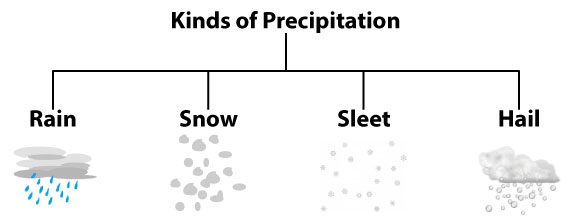What do we mean by “water in the atmosphere?”
When you hear the word “water in the atmosphere”, immediately think of water vapour (amount of water in the atmosphere). It is a well known natural phenomena where in water molecules become vapour due to evaporation.
How much water in the atmosphere exist?
Its concentration varies from 0-4% by volume of the atmosphere depending on location and the temperature of that place.
How is it formed?
When Sun’s energy directly falls over the water bodies, it makes it immensely warm. As a result, water molecules get warm, because of which they rapidly move and vibrate and then they quickly escape into the atmosphere as molecules of water vapour.
A similar process takes place in plants as well. It is known as transpiration. Again, here also the heat from the Sun evaporates water content from plants through its aerial parts such as – leaves, stems and flowers.
Now an important point to note here is the heat. Heat from the Sun makes the evaporation process occur.
Let’s look at two more natural phenomena:- condensation and precipitation.
Condensation is called the rivers of evaporation. A good example would be – take out a cold water bottle from fridge and keep it outside. You’ll notice a change in the physical state of matter from gas to liquid.
A similar thing happens in the atmosphere too. When warm air rises due to evaporation, it goes higher up till troposphere where it begins to cool and looses its capacity to hold water vapour. From the state of water vapour, it again turns into liquid and that’s how clouds are formed.
Once clouds are formed, the next step is precipitation. That means the water in the cloud has exceeded its holding capacity and it falls due to the pull of gravity. And that’s how rain, snow, sleet, hail occurs.
Summary
If I have to quickly sum it up, it all begins with evaporation (where in liquid turns into gas i.e. water vapour), after that condensation takes place (where in the water vapour which is gas turns back into liquid) and finally precipitation takes place (in which water falls as rain, snow or sometimes as hail).
Any interesting findings?
Hail is frozen rain, which gives us the necessary proof that water in the atmosphere not only exists in the form of liquid and gas, but it exists in the form of solid as well. With this we know that water is present in the atmosphere in three forms – gaseous, liquid and solid.
And more than anything else you must understand that there is a continuous exchange of water between the surface of earth and the atmosphere. In other words, the ocean and the continents continuously exchange water with the atmosphere through the process of evaporation, transpiration, condensation and precipitation.



